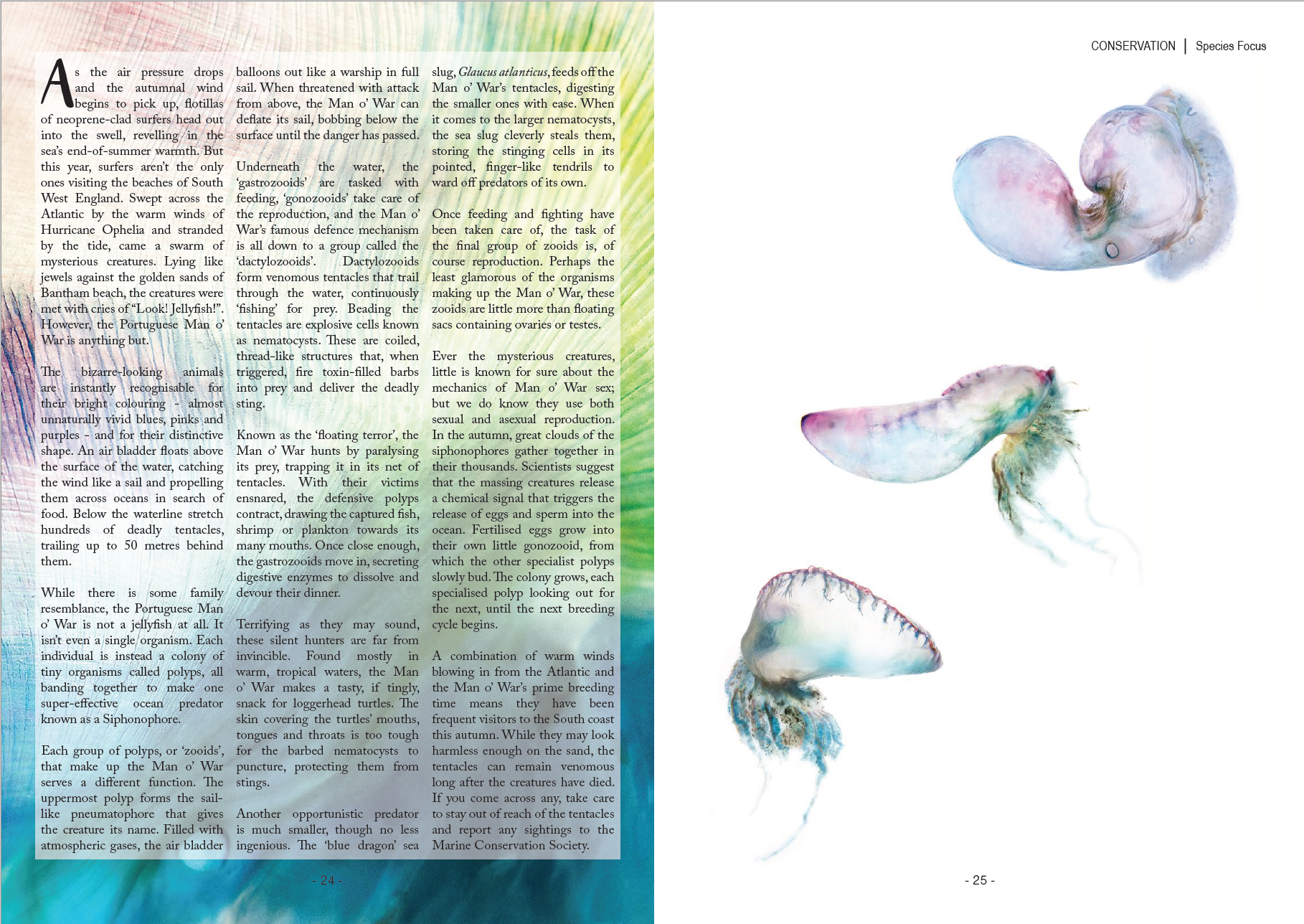Follow the link for the full article on my Man O' War project by Eleanor Peake http://www.wired.co.uk/article/portuguese-man-of-war
Nominee Photographer for MAYN /
As of today, I am officially a Nominee Photographer for MAYN, a creative, photography and video agency based in Falmouth, UK!
Check it out
www.mayn-creative.com
New Nature - January 2018 issue /
Follow the links to download the full issue and read the article written by Sarah Gaunt featuring my Portuguese Man O' War series!
How to conserve the Good, the Bad and the Ugly? /
I absolutely loved researching and writing my dissertation on WWF's campaigns. My topic of research, "How to conserve the Good, the Bad and the Ugly", focused on challenging human's perceptions of certain species and animal stigmatisation through powerful visual narratives.
If you are interested, you can access my dissertation on:
https://drive.google.com/file/d/1T9brUDy3CNRllBagxxCc8YyauciWpC65/view?usp=sharing
Save Our Bees /
All pollinating insects are crucial to the global ecosystem. One in particular gets a great amount of attention from the media, because of its apparent sudden decline: the Apis Mellifera Mellifera. Without the honey bee, at least 250 000 species of flowering plants wouldn’t flourish, many of whom are crucial the agricultural world for the production of daily consumed goods such as apples, blueberries, almonds, onions, broccoli. The reasons for this decline are not well defined and very varied: from climate change to pesticides, monoculture practices, habitat loss and diseases spread by parasites.
What makes the honey bee such a fascinating species is that it is a eusocial animal with outstanding communication abilities and division of work, which is why they have greatly inspired men throughout history. They are also “artisans” who produce a final manufactured product, the mystic and delicious golden honey, which generates thousands of products of great use to mankind. On a more symbolical and philosophical point of view, honey bees are equally fascinating. Since the beginnings of civilisation they have inspired scientists, philosophers, poets and religious representatives for they are ‘political insects’. As the proverbs says “Una apei, nulla apei” which means “one bee is no bee”, they can only survive as a group. Their whole life is dedicated to the survival of the colony and the production of honey, which men have “stolen” for centuries. Men love them, fear them and rob them at the same time, which makes them a strong emblem of man’s relationship with nature. They are also a symbol of selflessness and of relentless hard work for the common good.
I achieved this body of work through different photographic and postproduction techniques. The result is the product of a combination between microscopy, macro-photography, stacking and creative experimentation through Photoshop.
The series was created like a campaign which aim is to raise awareness on the importance and challenges of honey bee conservation as a flagship species for pollinators in general.







